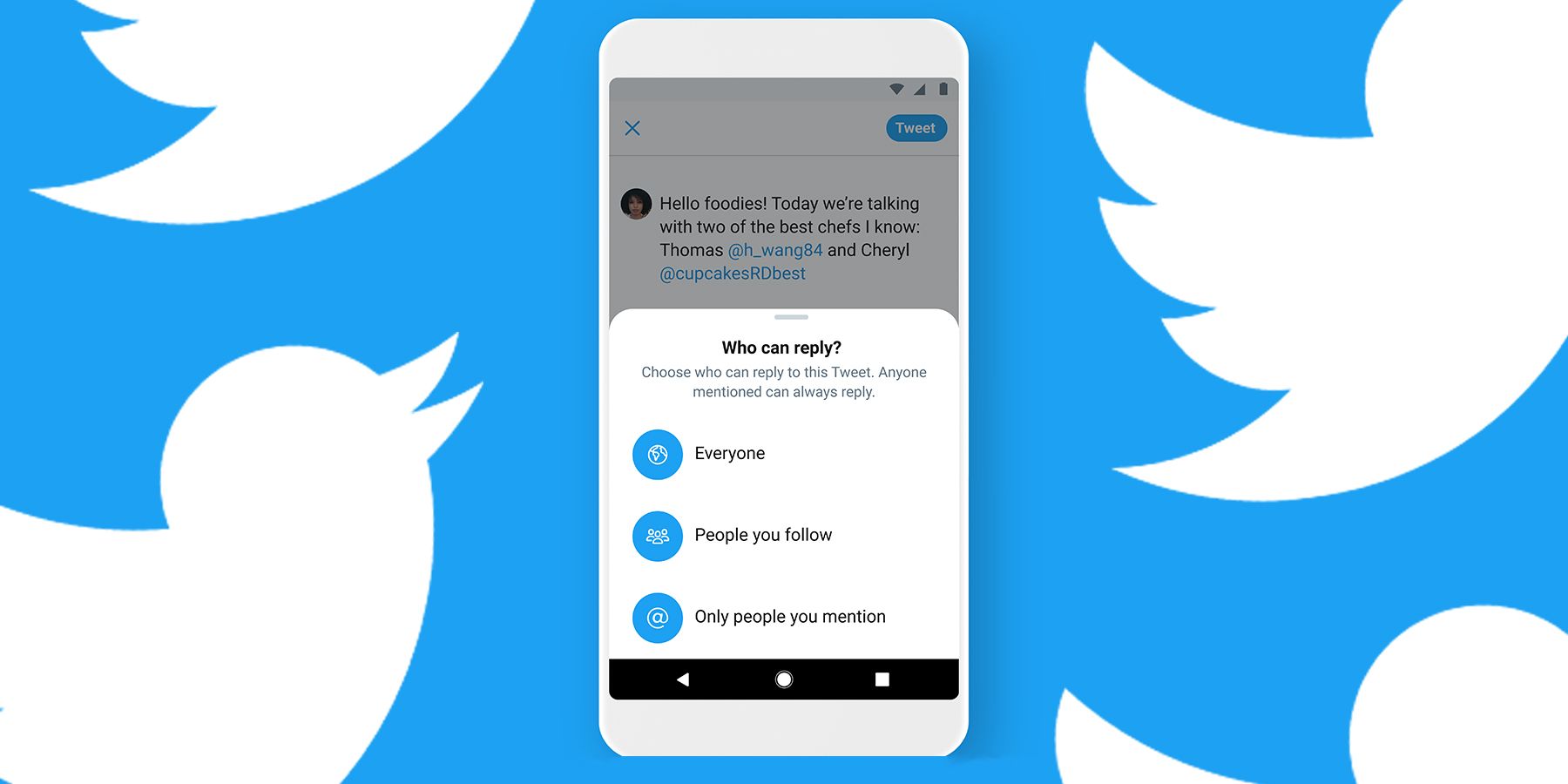
Twitter recently announced a full rollout of its new conversation settings, offering users the option to limit who can reply to any given Tweet. The goal is to allow its community members to feel more comfortable starting meaningful conversations without the fear of abuse or unwanted replies that can often coincide with a particular Tweet, especially in regards to controversial or newsworthy topics.
The new settings allow a person to compose a Tweet and decide to allow everyone to reply, only that person's followers, or only those mentioned directly in the Tweet. Rumors of these new conversation settings began to swirl last January and in May of this year, Twitter confirmed that it was testing these potential settings. It appears that the feedback was mostly positive and constructive, considering Twitter has officially launched the new setting features for all to utilize, whether it's through iOS, Android, or Twitter's website.
Twitter recently posted to its blog announcing the new settings and explaining how they might affect the way users interact with one another moving forward. Early rumors suggested that, in addition to limiting whom can reply to a Tweet, Twitter was considering an option to disallow any and all replies. This was understandably hailed as problematic, considering it limits the scope of conversation Twitter considers itself on the forefront of, and is quite contradictory to everything the social media giant stands for. With that said, Twitter is also considered an epicenter for verbal abuse and personal attacks, generating a need for some sort of reply regulation. However, while Twitter was perhaps testing a zero reply setting, it has not come to fruition. Be that as it may, there is still potential present in the new settings to limit the bandwidth of replies both good and bad, but Twitter appears to have a solid approach that allows people to stay engaged while still deterring abuse and spam. Here's a breakdown of how to make the best use of the new settings.

Anyone can now choose who can reply to a given Tweet, but that does not silence that person's audience, nor does it completely prevent replies. When composing a new Tweet, you will now see a small globe beneath the text box that says 'Everyone.' This is the default setting Twitter has always used to indicate that a Tweet is visible to all and anyone can reply. What is now different is the two settings below the 'Everyone' option. If you click or tap over the globe icon or text, you'll see two more options - 'People you follow' (only people you follow on Twitter can reply) or 'Only people you mention' (only those specifically mentioned with an @ within the Tweet can reply). While those are the three current options, Twitter has found a more effective and clever way to still allow those who are not authorized to reply, the opportunity to join the conversation and share their thoughts.
According to Twitter's Director of Product Management, Suzanne Xie, "Tweets with the latter two settings will be labeled and the reply icon will be grayed out for people who can’t reply. People who can’t reply will still be able to view, Retweet, Retweet with Comment, share, and like these Tweets." So while certain people may no longer be allowed to directly reply to a Tweet, they can still engage and interact. Early tests of these settings show promising potential as the reports of abusive replies, unwanted Direct Messages, and the number of mutes and blocks all decreased. At the same time, people on Twitter engaged more within the retweet and comment timelines and felt more comfortable discussing sensitive information with less fear of abuse.
While these new conversation settings seem like a limit on allowing rebuttals of challenges of a Tweet, that's not necessarily true. The retweet and comment feature for example, allows anyone to share their opinions, it's simply moved to a new separate timeline where the conversation can continue. Time will tell how this affects the Twitter-sphere overall, but the early results seem promising in ensuring any conversation can continue freely, with civility, and without the fear of being verbally abused or threatened for having an opinion.
Source: Twitter Blog
https://ift.tt/31L3k7V
August 12, 2020 at 05:00AM




